Editor's note: Since this review was originally published, we’ve had three Bontrager Line Pro 30 rear wheels fail during testing. All three were the 29in versions tested in the UK by Seb Stott. After the first two failures, we amended the score of this review, added Seb's impressions and contacted Bontrager's wheel manager for insight as to the cause of these failures and possible solutions. Bontrager suggested an early-production manufacturing defect was the cause. So, naturally, we called in a wheelset made after this defect was apparently addressed. When we tested that third wheel set, it broke in a similar way. Josh Patterson’s original wheelset, on which this review was based, has been inspected and both rims are still straight and true, with no visible rim damage.
First two wheel failures
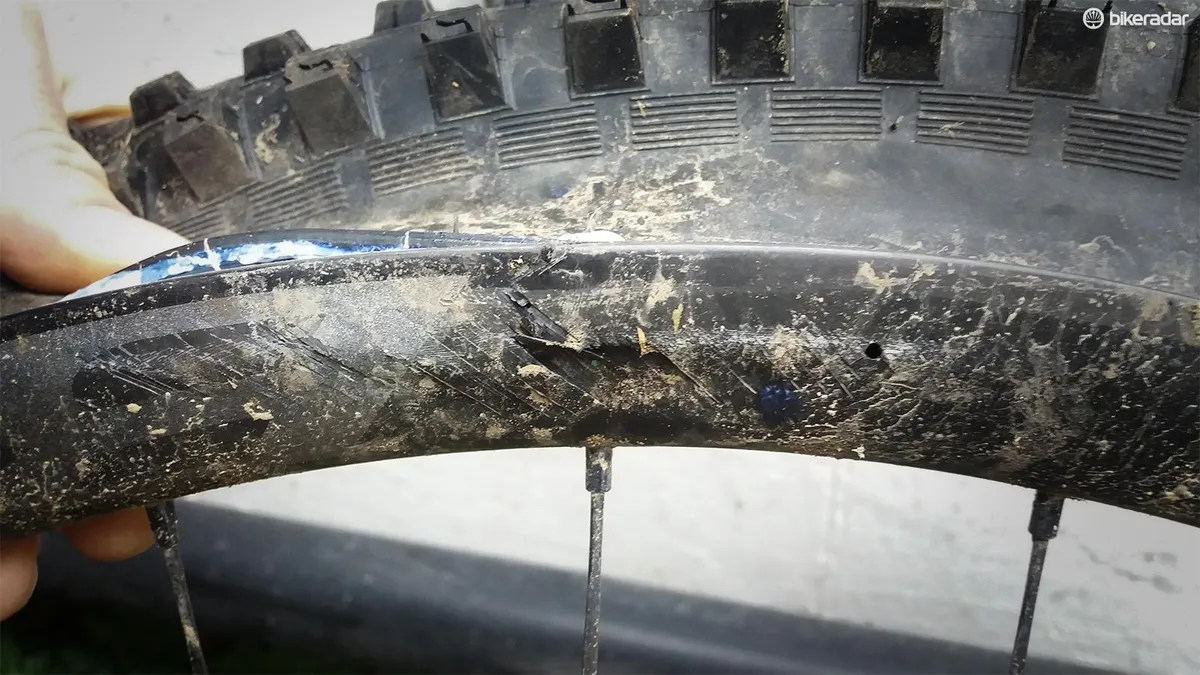
We experienced two rear wheel failures. Both collapsed and delaminated at the rear rim sidewall, causing air to rapidly escape from the tubeless setup. Both occurred when hitting rock gardens at Bike Park Wales, and both on the wheel’s first outing in rocky terrain.
The first rim broke when testing the Huck Norris insert inside a 2.4in Maxxis Minion DHR2 EXO at 26psi. The trail was appropriately named "Rim Dinger", so it wasn’t overly surprising to damage a rim here. Having said that, we spent the rest of the day riding the same trail at identical pressures on a Bontrager Duster Elite wheel, which lasted fine, save a few dents (albeit with far more tire squirm due to the narrower rim width).
Our replacement rear wheel also broke on its first outing to Bike Park Wales. This time it was shod in a 2.6in Specialized Hillbilly Grid tire at 27psi with no insert. "The rock garden in question is savage, but I've ridden it at least 20 times without issue using a whole range of wheels," Seb noted.
Josh's wheelset has been ridden hard in the rocky terrain of Northern Colorado and, as previously mentioned, his test wheelset is still performing as expected. It's worth noting that Seb weighs approximately 40lb/18kg more than Josh, which could have played a role in their different experiences.
Is this a widespread issue?
The engineering squad said these failures are likely due to material pinch at the hook bead parting line, causing rim weakness
We couldn’t find another media outlet that has experienced similar issues with the Line Pro 30 wheelset. Still, Seb’s experience of three cracked rear rims under conditions that are within the test boundaries of trail/enduro wheelsets makes us reluctant to recommend these wheels.
Bontrager dug into the company's warranty data for this wheelset. According to the company, at the time of this update, there are a total of 2,385 Line Pro wheelsets in the field. This number includes both 27.5in and 29in versions. When we asked about warranty rates after the first two wheels failed, Bontrager claimed that there had been a total of four rim failures similar to the two that Seb experienced. So, this does not appear to be a widespread issue.
If you own a Bontrager Line Pro 30 wheelset, please let us know in the comments section whether or not yours have proven reliable.
Bontrager's take on the two failures
We contacted Graham Wilhelm, Bontrager’s wheel product manager, who inspected the images of our first two broken rims.
“The engineering squad said these failures are likely due to material pinch at the hook bead parting line, causing rim weakness. (A parting line is a gap where the pieces of the mold tooling meet up.) If operators aren’t careful while closing the tool, material can get pinched in the tool," Wilhelm said.
"After molding, the excess pinched material is then removed using a hand process, which can lead to removing too much material, weakening the top of the hook. Since the hook is what takes the impact first, if it goes, so does the rest of the rim."
Bontrager states that the company initiated a tooling change with its vendor to prevent material pinch at the top of the hook. So, it seems that the cause of our broken Line 30 rims was a hand-finishing error, which, according to Bontrager, was remedied early in the production process and is unlikely to affect the majority of Line 30 wheelsets on the market.
We ordered another wheelset for test, which was made after the aforementioned tooling change was implemented. Interestingly, it fared no better.
What about that third wheel?
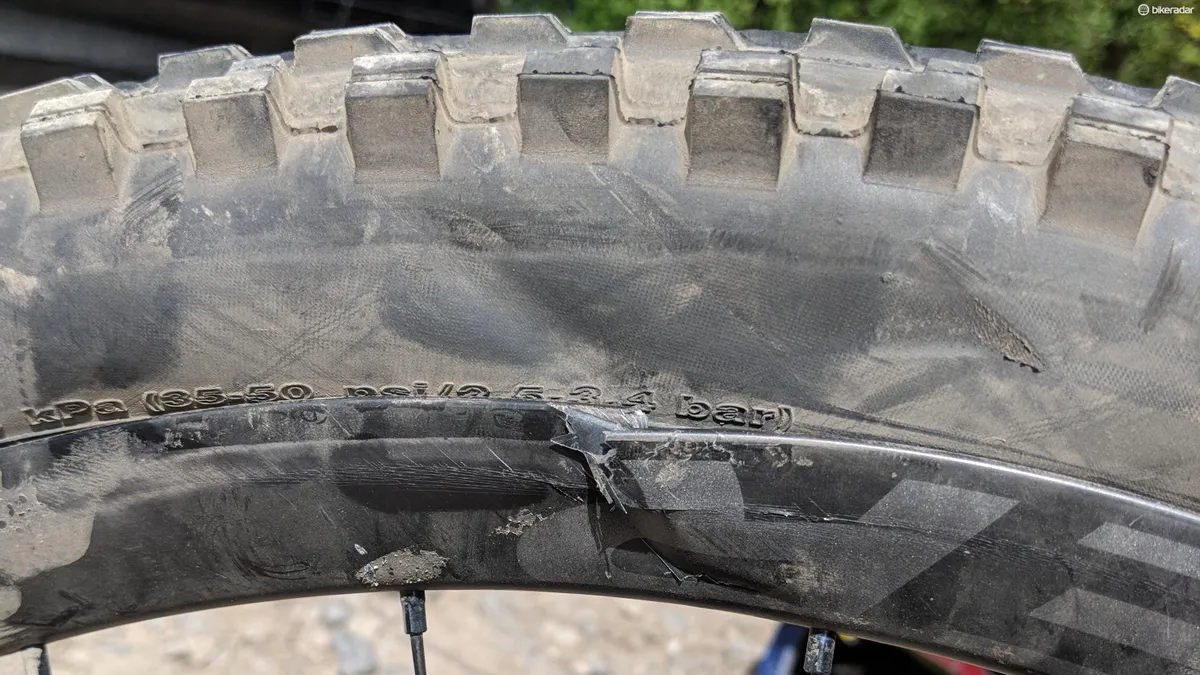
This is how Seb Stott reported on the the third wheel failure.
The rear wheel was shod with a 2.5in Minion DHF tyre, EXO casing, tubeless with no inserts, at 26Psi exactly. The bike was a Transition Sentinel with 140mm of rear travel and minimal compression damping.
I rode the same rock garden on which the second wheel broke. For the first two runs, there were no issues, but on the third run the rear wheel cracked in much the same way as the other two.
This is a pretty gnarly rock garden, and I was riding hard. However, I have taken literally dozens of test bikes down this section, and while I have once dented an aluminium rim, and once got a pinch flat when running a tubed setup, I have yet to completely break any other rims in this section. This includes a pair of SRAM Roam 60 wheels, which are also carbon and slightly lighter, if pricier, than the Line Pro 30s. I tested the Roam 60s on the same bike, same track, same tyre pressures, with no issues.
Crucially, when I took the tyre off the rim and inflated it on another wheel I found the tyre had no leaks. The fact the rim failed before enough force built up to puncture the tyre suggests the rim is not as strong under this kind of impact as other rims. I've yet to puncture a tyre on these wheels without destroying the rim.
I was testing the wheels hard, but not recklessly. If Bontrager's warranty claims are to be believed, the average customer is unlikely to run into this issue. But Bontrager's website claims these wheels offer "Unmatched performance for enduro or trail," with "best-in-class strength and durability". Our testing does not tally with these claims. After writing-off three rims, twice without puncturing the tyres, we cannot recommend these wheels to our readers.
What if this happens to me?
In addition to asking how these failures could have occurred, we asked how this situation would have been handled if it had happened to a customer, rather than a product tester.
Wilhelm says: "If this scenario happens to a customer, they would go to their local Trek dealer who would mail in the wheel for rim replacement. If the damage was caused by a defect, we cover it under warranty; if the damage was caused by somebody getting too rad we cover it under our carbon care program. This gives them the new rim, spokes, nipples and factory rebuild for around cost."
Full details of Trek's Carbon Care Program can be found on its website.
What's with the weird line on the rims?
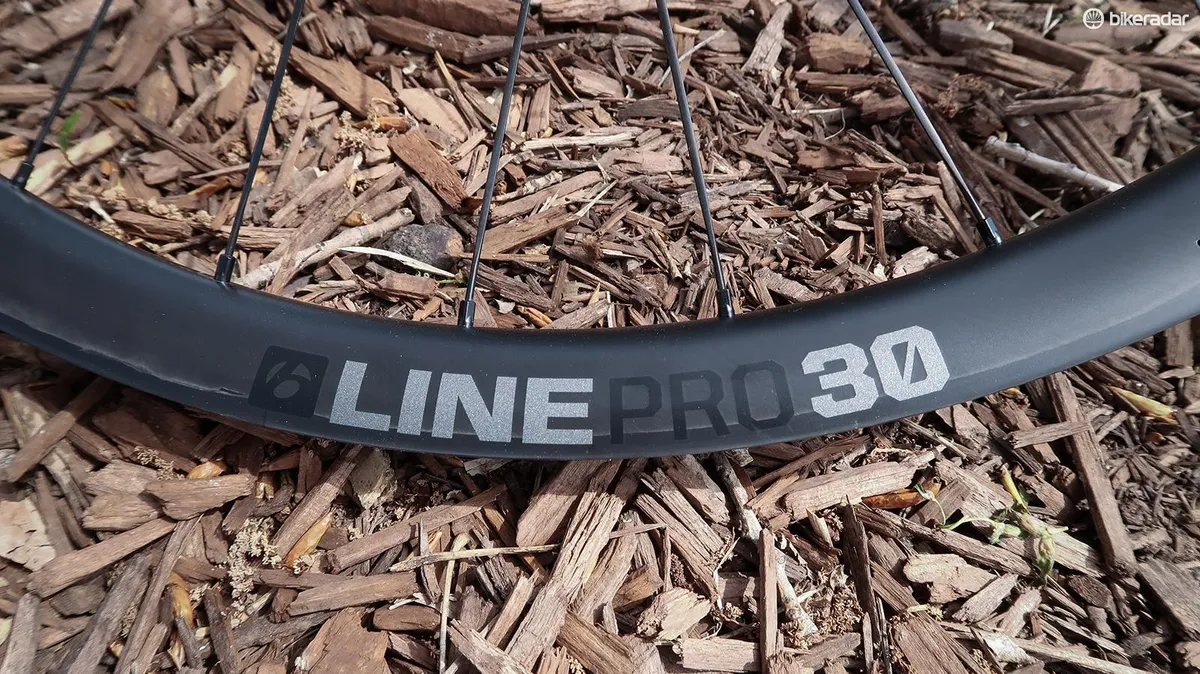
Several BikeRadar readers commented on this image of the wheelset tested by Josh. (The Line Pro 30 wheelset that is still going strong.) Some readers thought the light area near the outer edge of the rim looked like a crack.
"That is the resin rich region where two laminates come together and is perfectly normal for these rims. It is more noticeable at certain angles but is perfectly normal," said Alex Applegate, Bontrager's marketing manager.
Original review of Bontrager's Line Pro 30 wheelset — Josh Patterson
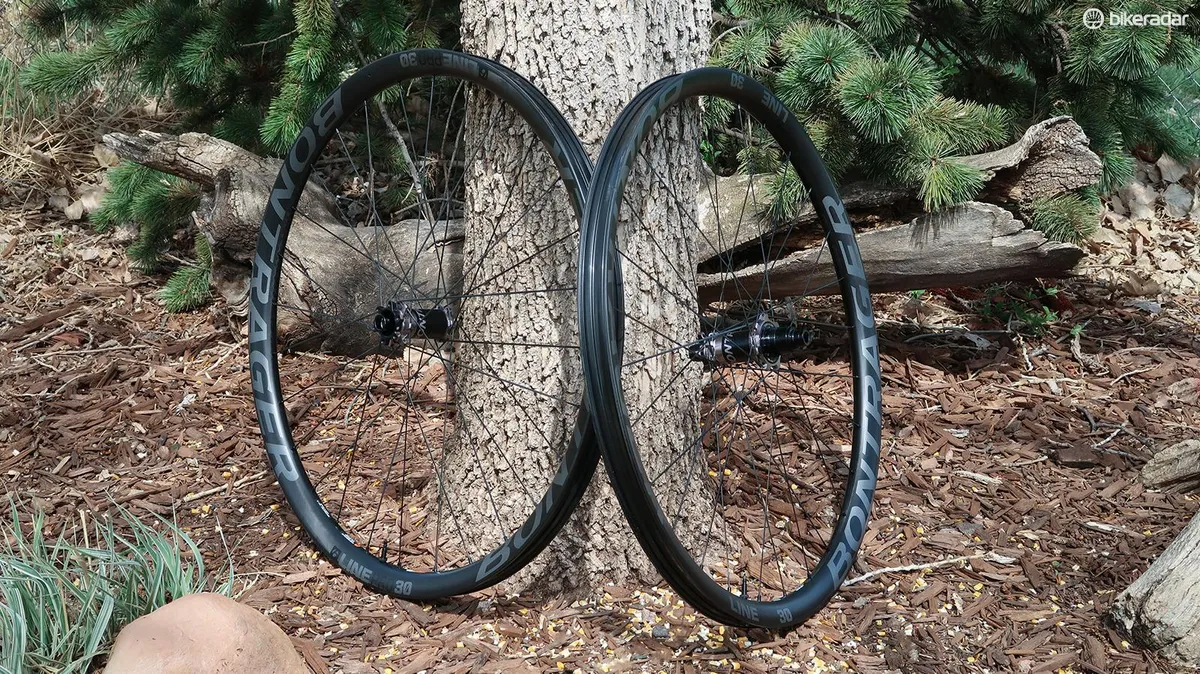
The Line Pro 30 wheelset is aimed at trail riders and enduro racers. The 29mm internal width is in line with most modern trail wheelsets. According to Bontrager, this width works well with tires in the 2.25–2.5in range.
The claimed weight for the 29er Line Pro 30 wheelset tested here is 1,608g. The actual weights, which include Bontrager’s tubeless rim strips and valve stems, are markedly higher. The front wheel comes in at 800g, and the rear weighs in at 940g, for a total wheelset weight of 1,740g.
More engagement for less money is a rare thing in freehubs, so take advantage of it when you can
Not a deal breaker, but certainly not as light as claimed. Considering the attainable price of £900 / $1,200 / AU$1,700, we're willing to let this slide.
Unlike many other carbon rims, the Line Pro 30 rims still use bead hooks. According to Bontrager product manager Alex Applegate, Bontrager designs its rims and rim strips as a system.
“The rim strip fills in the rim profile, effectively giving you a hookless type setup, but with the added benefit of the tire butting up directly against the strip. This helps with air retention and eases initial tubeless setup. Structurally, there is no downside to the hook. It is just as strong and even offers more tire protection on sharp impacts,” said Applegate.
These OCLV carbon rims are laced to the hubs with 28 DT Swiss straight-pull Aerolight spokes and Alpina locking nipples.
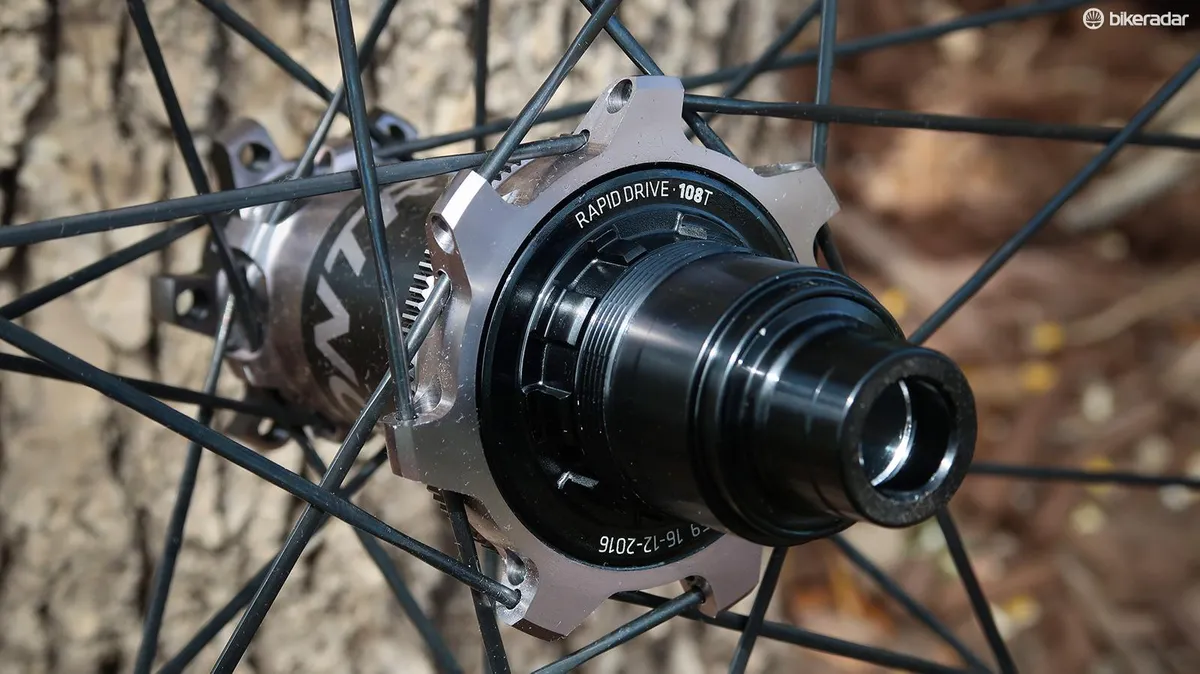
Speaking of the hubs, unlike Bontrager’s top-shelf Kovee XXX and Line XXX wheesets, which rely on DT Swiss 240 hubs, the Line Pro 30 wheelset rolls on house brand hubs.
Bontrager’s Rapid Drive freehub system uses six pawls to provide 108 points of speedy engagement. The system is compatible with both Shimano and SRAM XD freehubs.
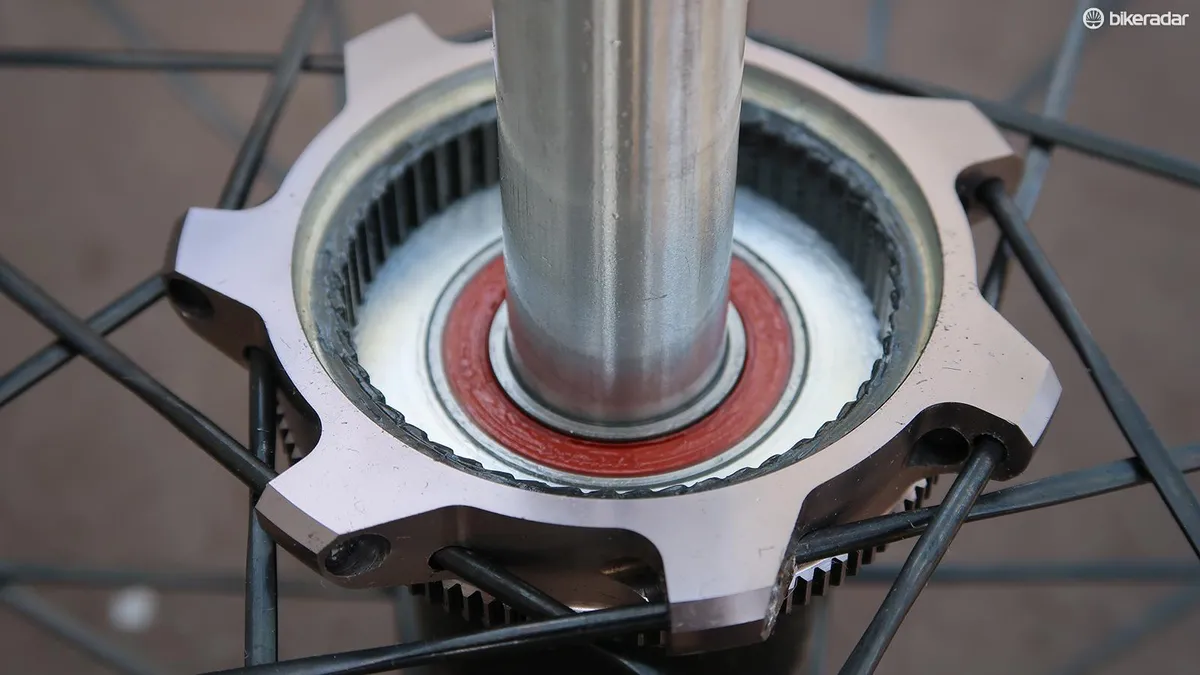
Bontrager Line Pro 30 wheelset ride impressions
For this test, I mounted Bontrager’s stellar 29x2.3in SE5 as well as the 29x2.4 XR4 Team Issue tires to the wheelset. The tires were easy to seat and pair well with the 29mm internal width.
On the trail, the Line Pro 30 wheelset feels quick and responsive. The 3.3-degrees of freehub engagement provided by the Bontrager Rapid Drive freehub is immediately noticeable.
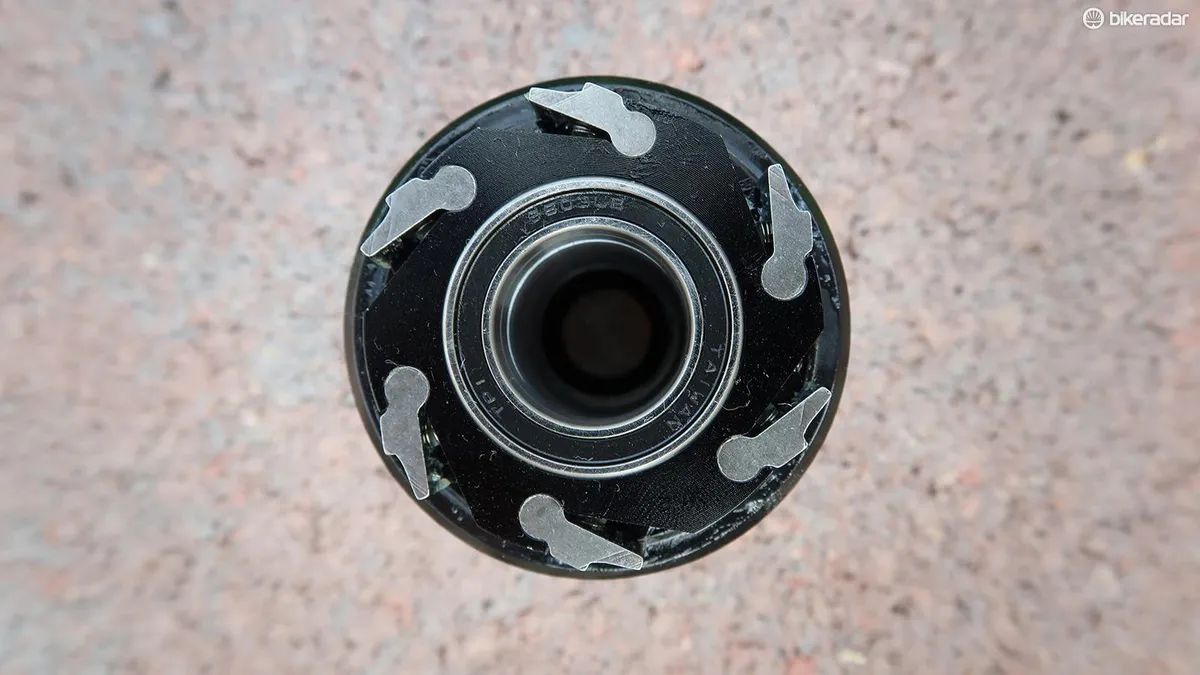
It’s markedly quicker than the DT Swiss 240 hubs with their 54t drive rings found on the company’s top-end Kovee and Line XXX wheels — more engagement for less money is a rare thing in freehubs, so take advantage of it when you can.
As for sound, the Rapid Drive freehub isn’t quite as raucous as a Chris King or Industry Nine freehub, but it will get the attention of other trail users.
Bontrager Line Pro 30 wheelset updated verdict — Seb and Josh
The Line 30 wheelset is a promising product if Bontrager can address these manufacturing issues. We will update this review with our impressions after spending more time on a revised wheelset.



